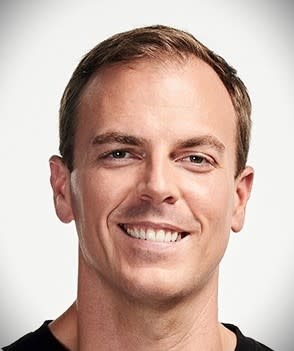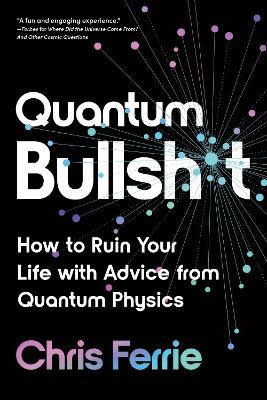Get a reality check on quantum computing vs. ‘Quantumania’ in Marvel’s latest movie

Ant-Man may be small in Marvel’s latest superhero movie – but in the real world, Quantum is big.
Quantum information science is a top technology priority for the White House, along with artificial intelligence. Microsoft, Google, Amazon, IBM and other tech heavyweights are getting closer to developing honest quantum processors. A company called IonQ has a billion-dollar plan to build quantum computers in the Pacific Northwest. The quantum computing market is expected to reach $125 billion by 2030.
So you might think that Ant-Man and the Wasp: Quantumania will do everything in its power to show real advances in quantum physics.
If that’s what you expect from the movie, think again. “There is no connection to real physics or to our understanding of reality,” says Chris Ferrie, a quantum physicist at the University of Technology Sydney and the UTS Center for Quantum Software and Information.
Ferrie should know, and not just because he has a PhD: his latest book, titled Quantum Bullsh*t, colorfully catalogs how popular accounts of quantum physics go wrong. On the latest episode of the Fiction Science podcast, Ferrie explains why these accounts focus on the BS rather than the brilliance of the theory.
“The reality…that quantum physics is a tool for engineers to make predictions about their experiments…is really boring,” he says.
It’s an area where Hollywood has the edge. Quantumania is anything but boring. Ant-Man and his family all grow small fighting villains in a shrunken dimension known as the Quantum Realm. The use of the Q-word lends a 21st-century scientific aura to a size-reducing plot concept that had previous incarnations in Fantastic Voyage and Honey I Shrunk the Kids.
Ella Meyer, an outreach coordinator at the University of British Columbia trying to demystify quantum computing for students, says Quantumania makes her job harder.
“I don’t know if anyone has seen trailers for ‘Ant-Man’ lately, but it’s wasting years of my work by using ‘quantum’ incorrectly,” she said at last month’s Northwest Quantum Nexus Summit in Seattle. “That’s why it’s harder than ever to get people to properly engage with that word.”
The concept behind Marvel’s Quantum Realm came from a quantum physicist, Caltech’s Spiros Michalakis, who was a 2015 science advisor on the original Ant-Man film. (Marvel’s previously used name for this realm, the Microverse, had to be rescinded due to legal issues.)
Michalakis described the quantum realm as “a place of infinite possibility, an alternate universe where the laws of physics and the forces of nature as we know them have not materialized”.
Ferrie, who knows Michalakis, points out that there really is no such thing as a separate quantum realm. “There is only one reality. … So I would say there are different windows to this one reality,” he says.

Classical physics offers a panoramic window that tends to view the universe as a giant machine. “If you keep it well oiled, everything will work as expected,” says Ferrie.
In contrast, quantum physics is “more like a stained-glass kaleidoscope,” he says. “It shows the world with a lot of symmetries, but it’s also very complex and things aren’t deterministic. There is chance and uncertainty.”
On the scale of everyday things like motorcycles, using the classical physics window makes more sense. But at the scale of subatomic particles like muons, the quantum physics window works much better. At this point one can think of the properties of particles as entanglement, possibly over long distances. Or imagine a quantum bit of information that represents multiple states at once, rather than, say, strictly “up” or “down.”
In the podcast, Ferrie explains how physicists view the real world in terms of the uncertainty principle, quantum entanglement, quantum teleportation, and other Q-word concepts. It’s a world entirely different from Ant-Man’s Quantum Realm.
“We can’t really experience that world,” says Ferrie. “So we project our own way of seeing the world and communicating about the world into some kind of fictional scenario.”
He’s not upset: “I don’t think there are people who go to sci-fi movies that are about superheroes and people who fly and travel faster than light and then think there’s something about physics Got it.” he says, laughing.
He’s more annoyed with people who claim that quantum healing crystals or quantum biofeedback devices can heal what’s ailing you for a low, low price. In “Quantum Bullsh*t,” Ferrie drops truth bombs (and occasionally F-bombs) at the BS – and takes a slightly askance look at two far-flung concepts that benefit from quantum connections:
Quantum Consciousness: Some scientists, including the Nobel Prize-winning mathematician Roger Penrose, have speculated that quantum processes could give rise to consciousness and our perception of external phenomena. “You look at microscopic biological processes and ask yourself, ‘Do I need quantum physics to make accurate predictions and to understand these phenomena?’ And most of the time, with all biological processes, the answer is no,” says Ferrie.
Quantum Multiverse: The Many Worlds Hypothesis holds that reality branches into multiple versions of the universe — and in science fiction stories ranging from “Back to the Future” to “The Peripheral,” these branches become tangled. The Multiverse was billed as a title in an earlier Marvel film, Doctor Strange in the Multiverse of Madness, and also features in Quantumania. “It’s not something that exists in the rules of quantum physics, right? It’s an interpretation you add that is unverifiable,” says Ferrie.
However, there are a number of quantum connections that Ferrie says could eventually pay dividends: These connections have to do with quantum computers and sensors. Such devices actually use quantum effects. For example, quantum bits (aka qubits) can represent multiple states of information during processing, rather than just the “one or zero” states represented by the bits in classical computers.

“There are things you can do with two correlated qubits that you can’t do with two correlated ones [classical] bits,” says Ferrie. “But if you had more bits, you could do it. So it’s more about the amount of resources that would be needed to solve a task.”
Some tasks – like optimizing networks or designing molecules or cracking secret codes – would be better suited to quantum processing. But after decades of gestation, quantum computing is still in its infancy. And even when it’s mature, Ferrie is betting most of us won’t even notice.
“Let me put it this way: if we have a quantum computer, you will interact with it exactly as you do [with] a digital computer,” he says. “Why? Because if you had to know quantum physics to use it, nobody would buy it.”
The way Ferrie sees it, the real-world quantum realm is something best left to physicists and engineers, not superheroes.
“It takes a couple of years at university and you can understand all the equations and solve them for any situation you might come across in the lab,” he says. “Quantum physics is simple. It is The World that is strange and surprising – the emerging world that we are observing.”
Visit Chris Ferrie’s website for links to more information on quantum physics and quantum BS. For super easy explanations of quantum physics, read the books Ferrie has written for the younger crowd, from Quantum Physics for Babies to Do You Know Quantum Physics? for 4-6 year old readers. Ferrie also addresses adult quantum mysteries in a book called Where Did the Universe Come From? And other cosmic questions.”
This report is an adaptation of the original post on Cosmic Log. Stay tuned for future episodes of the Fiction Science podcast via Anchor, Apple, Google, Overcast, Spotify, Breaker, Pocket Casts, Radio Public and Reason. If you enjoy Fiction Science, please rate the podcast and subscribe to receive notifications of future episodes.